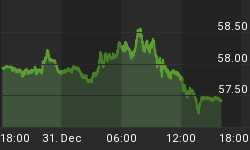This is the question being asked in the financial community. At odds are the dollar bears, who see an imminent resumption of the decline in the U.S. dollar index followed by lower lows. On the other side of the fence are the bulls, who see near-term strength in the dollar and a much-needed recovery rally lasting longer than the mere six weeks it lasted from late December until early February.
Ignoring the longer-term discussion for now, let’s focus on the short-term outlook. In my previous forecast I accurately predicted the dollar index would meet resistance at its 30-week moving average, which it promptly did, falling 2.00 to the current 84.46 as of Tuesday, Feb. 15.

This 30-week MA also coincided with the upper boundary of a short-term uptrend channel so it wasn’t surprising to see the strong resistance coming in last week at this level. Now that the dollar index has fallen off in the last 4-5 days, it’s starting to draw near the lower boundary of this uptrend channel. This is also approximately where the 60-day moving average intersects in the daily chart, making it a strong potential support in the near-term.
Do the odds favor the dollar shortly finding support and basically staying within the confines of that short-term uptrend channel? I believe they do. Below you can see the said uptrend channel along with the short-term positive h influence of a parabolic bowl, which year-to-date has given the dollar a little upside impetus and has kept the dollar above its 2004 lows.
 From a market psychology standpoint, there is simply too much pessimistic sentiment against the dollar for the dollar to break down from here and resume its previous downward trend. For instance, in a recent issue of the London Financial Times the following headline was present: "Sustainability of dollar questioned." Whenever the sustainability of anything in the market is questioned it usually marks at least a short-term bottoming process that is followed by a reversal rally. The markets has a way of making the bearish detractors look like fools whenever they get too bearish.
From a market psychology standpoint, there is simply too much pessimistic sentiment against the dollar for the dollar to break down from here and resume its previous downward trend. For instance, in a recent issue of the London Financial Times the following headline was present: "Sustainability of dollar questioned." Whenever the sustainability of anything in the market is questioned it usually marks at least a short-term bottoming process that is followed by a reversal rally. The markets has a way of making the bearish detractors look like fools whenever they get too bearish.
The aforementioned article in the Financial Times stated, "The mood in the market was that this was as good as it gets for the dollar, presenting the perfect selling opportunity for those wanting to rebuild the short-dollar positions liquidated so aggressively this year." That kind of openly bearish sentiment does not go unnoticed by Mr. Market and it is doubtful the editors at the Financial Times will have the satisfaction of seeing the dollar break down anytime soon.
Then there is continued talk of the U.S. trade deficit. Recent data showed that the U.S. trade deficit narrowed more than expected to $56.4 billion in December, "continuing a run of bullish signs for the U.S. dollar," the article said. But the Times was quick to bring in the bearish arguments to try and dispel this. In that same article mentioned above the Financial Times made reference to some unnamed analysts who "questioned just how impressive the narrowing of the trade gap...really was." The article concluded with a quote from Michael Woolfolk at Bank of New York, who said, "The report failed to dispel lingering doubts over any near-term improvement in the deficit."
Taking the bearish sentiment a step further, in the weekend edition of the Financial Times of Feb. 12/13, the lead editorial for the day was headlined, "No lasting respite for the greenback (Never mind better trade data: the dollar has further to fall)." The editorial expanded on the bearish arguments about the U.S. deficit and the need for "significant improvement" in the domestic front. It offered the following advice: "...the U.S. needs to do much more than stabilise the current account deficit: it needs to cut it, probably to about 3 per cent of GDP, to stop net debt mounting to an unmanageable level." The editorial concluded with these words: "To get from here to there will require a further big change in relative prices: in other words, a further sizeable decline in the dollar." Again, this is simply too much negative psychology and the market has a way of feeding off this to stay afloat.
More likely for the dollar is a trading range for the next several weeks as the Fed tries to stabilize the markets after the major imbalances of the previous year across many sectors. A runaway, sustained declined in the dollar would not be welcome by the Fed at this time, which is why they are doing everything in their power to prevent it.
















